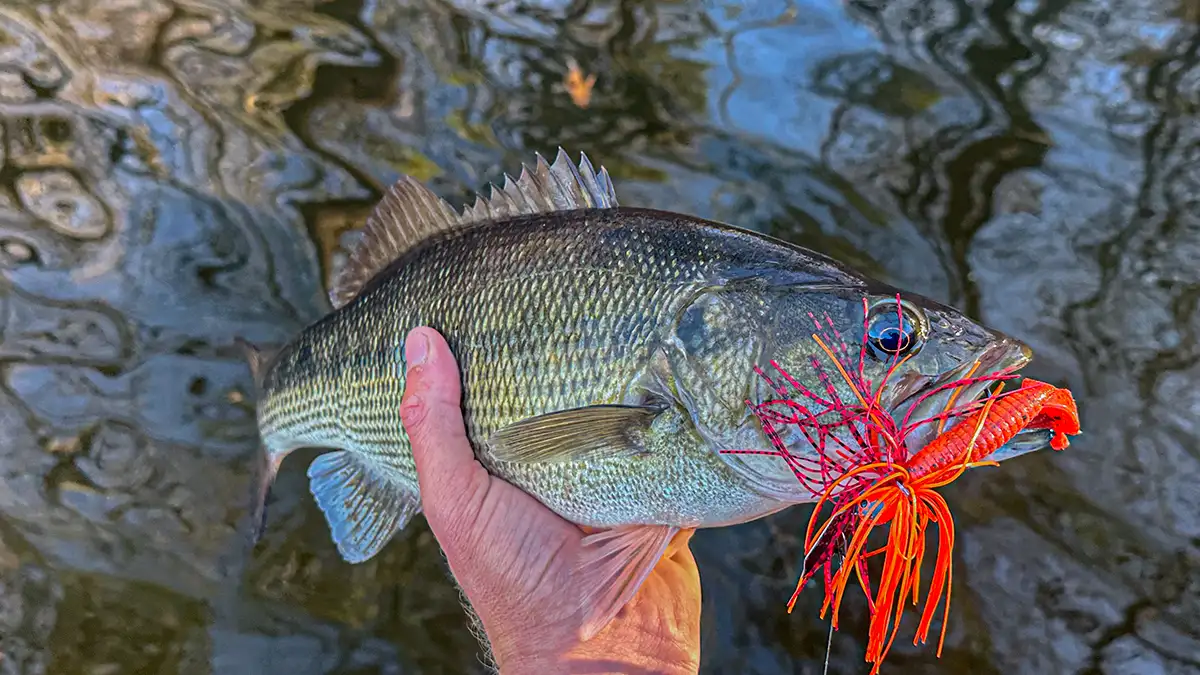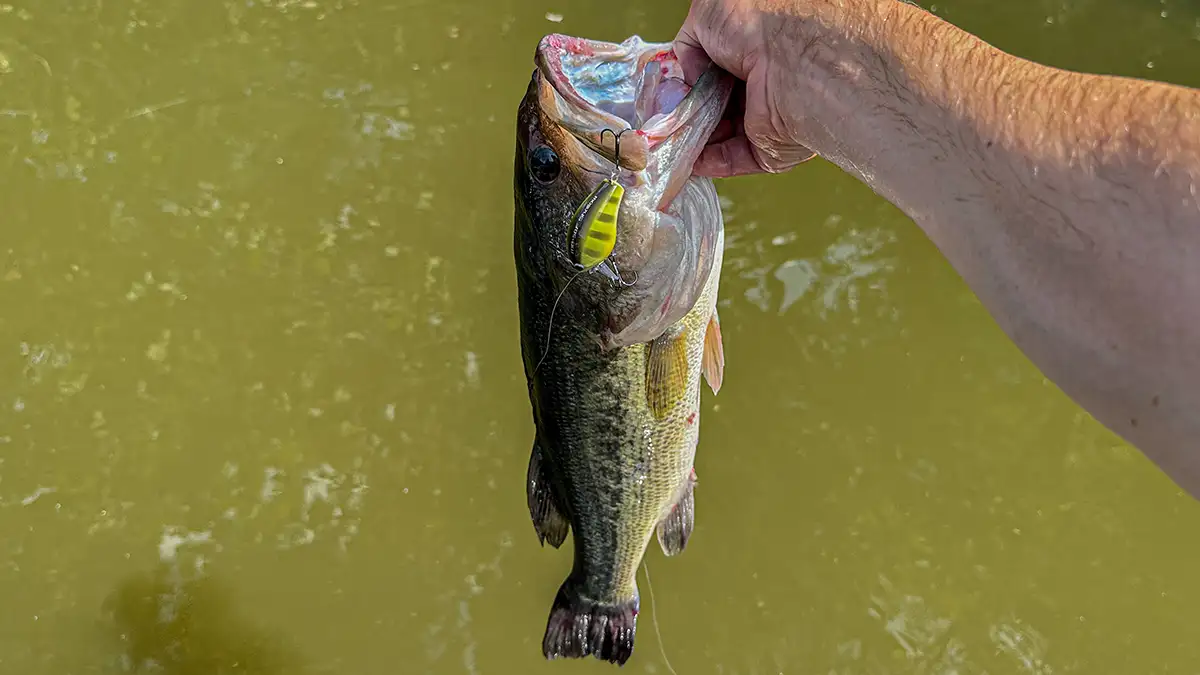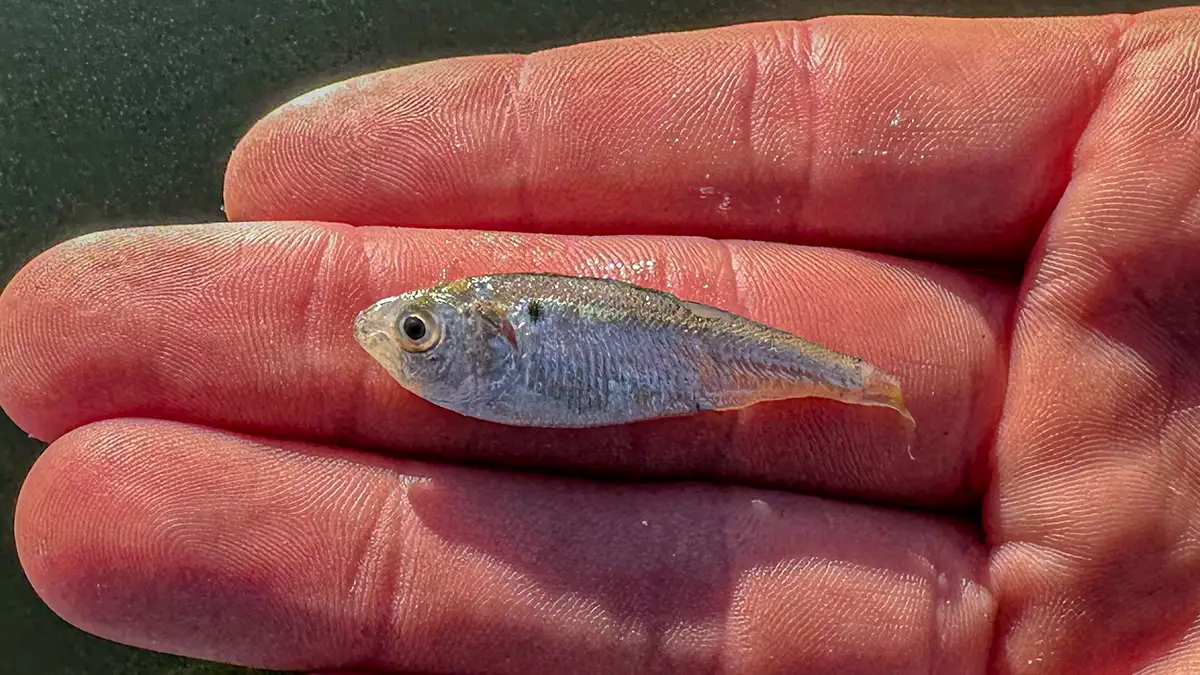As water temperatures continue to drop, dirty water quickly becomes a major player in bass fishing tournaments across the country. Every winter it seems that giant limits of largemouth and spotted bass are caught out of muddy water on a number of different lakes. This seasonal pattern gives anglers the ability to target bass using a variety of exciting shallow water techniques.
Power fishing is an extremely popular style for targeting this clarity of water. Baits such as crankbaits and vibrating jigs are both historically productive baits in this scenario. There are a few reasons fish congregate in muddy water this time of year, often leading to a stellar day of fishing when all the stars align. This feature will highlight exactly how and when to fish dirty water for bass.
LOCATING DIRTY WATER
The first hurdle in having a successful day of catching bass in muddy water is locating stained water. There are typically a few location this type of water can be found, and numerous different tools to help you find it. The most efficient tool for locating stained water is Google Earth. Using satellite imagery to quickly locate the dirtier areas of the lake is an easy way to quickly find the dirtiest water in your area.
Places such as rivers and the backs of creeks are both traditional areas that hold this stained water. Another easy way to locate these areas is by driving around your local body of water and using your eyes. Any significant change in water clarity is usually a good location to start fishing. While locating these areas can be fairly easy, the fish aren’t always there. One of the best way to consistently locate fish in dirty water is by paying attention to the water temperature.
WATER TEMPERATURE
Water temperature plays a big roll is positioning fish in muddy water. As temperatures cool, fish become more lethargic and less willing to feed. This causes fish to migrate to the warmest water in the area for both comfort and food. Muddy water tends to trap heat from the sun better than clear water, ultimately causing it to be warmest portion of the lake. This is one of the biggest reasons fish congregate in these locations throughout the winter.
Another thing to look for when fishing muddy water is rocks. Rocks also do a great job at trapping heat throughout the winter months, often causing bass to congregate on this type of cover. I like to targeting these locations as water temperatures reach the mid 60’s to high 50’s. While water temperature plays a big role in effectively fishing muddy water, the newness of the mud is another important factor worth noting.
NEW VS. OLD MUD
The term “new mud” refers to water that was recently clean and abruptly became dirty. This is often due to rain, changing water levels or other weather conditions. This can disturb an area and often force fish to cleaner more comfortable water. I typically like to steer clear of these locations as they are often less conducive for a successful day of fishing. The term “old mud” however, refers to an area that is typically stained regardless of the conditions. Fish are able to become acclimated to these consistently dirty areas allowing them to be much more productive than their “new mud” counterpart.
These are typically my favorite areas to target as they often hold the highest congregation of bass. An example of “new mud” could be a wind blown bank that was clear the previous day, while “old mud” could be the back of a creek that’s always slightly stained. Targeting “old mud” locations can be an extremely effective way to target bass throughout the winter months. While finding old mud is important, the presence of baitfish and other types of forage is arguably just as crucial.
PRESENCE OF BAIT
The presence of bait is another driving factor in the congregation of bass around dirty water. This isn’t just shad, crawfish and other types of forage all play a roll in attracting these fish. The type of forage present often determines what type of lure will be successful in this scenario. Common types of bait that are found in these areas across the country are shad, bluegill, crawfish and other types of crustaceans.
One of the best ways to quickly identify what type of forage bass are feeding on is by checking to see if they spit up bait, or if they have any in their crushers when you catch one. Side scan and forward facing sonar can also be valuable tools for locating forage. Idling these dirtier areas for balls of bait is a quick and effective way to locate bait in these areas. Vary your lure selection accordingly once you key in on what type of bait these fish are eating.

LIGHT PENETRATION
Light penetration refers to the amount of sunlight that penetrates the water. This is directly controlled by how sunny or cloudy it is on any given day. This simple factor can play a major role in getting fish to bite in this scenario. Traditionally, cloudy days are thought to be the best for fishing because it helps conceal your lure leading to more bites. I’ve found this to be the opposite when targeting muddy water areas.
Fish often congregate in muddy water during the winter months. This causes them to be sluggish due to the cold temperatures. Bright sunny days can be some of the most productive for getting these fish to move around and react. The bright sun will often brig fish shallow in search of warmth, giving you are opportunity to target them using a variety of techniques.
HOW TO FISH DIRTY WATER
When fishing dirty water, the fish can’t see your bait as well. This causes bass to react based on water displacement and sound as opposed to flashy paint jobs or realistic profiles. This causes the angler to choose baits that cause lots of disturbance in the water. Traditional moving baits such as a vibrating jig and a crankbait are both major players in this scenario. Making repetitive casts at shallow cover as well as changing you casting angel are both great ways to finish these baits.
Power fishing is arguably the most popular way to fish dirty water throughout the winter months. This style of fishing is great for fishing shallow water cover and involves covering a lot of water with various styles of baits. While covering water using moving baits can be effective in this scenario, I like to slow down and use other types of bottom baits as well based on the current conditions.
BAIT SELECTION
When targeting bass in muddy water, there are a few lures I don’t leave the house without. These three lures consist of a crankbait, flipping jig and a vibrating jig. These lures are equipped to fish stained water in all conditions, however each shines in their own specific scenario. Choosing between one of these three lures based on water temperature, forage and light penetration is a great way to approach this scenario.
When fishing a crankbait or vibrating jig, I will typically be throwing it around some sort of shallow cover. Laydowns, docks and rip rap walls can all be productive locations this time of year. However, I’ve found that shallow rock is often the most high percentage type of cover in these cold water conditions. Paralleling the bank throwing earthier one of these lures is a great way generate some reaction strikes.
I will typically opt for the crankbait in colder temperatures or when around shallow rock. I opt for the vibrating jig when fishing around cover that requires me to skip the bait, as well as laydowns, docks and other types of shallow water cover. Some of my go to’s include the Z-Man Jack Hammer in the Fire Craw color, as well as the Berkley Frittside 5 in Candy Apple Red.
A flipping jig is another bait that’s extremely productive in this scenario. Fishing this bait around the same types of cover gives these fish a different presentation thats just as productive. I like to use a flipping rig when bass are positioned tight to cover, or when they are feeding on crawfish. This is a great crawfish imitation bait, and perfect for pulling bass out of thick brush. Some of my go to flipping jigs are the Dirty Jigs Tour Level Pitching Jig and the D&L Advantage Casting Jig.
Targeting bass in stained water can be a fun and effective way to catch bass throughout the winter months. Paying attention to factors such as water temperature, forage, light penetration and bait selection will all help you catch more fish in these scenarios. This features highlights exactly how and when to fish dirty water based on the current conditions.

















